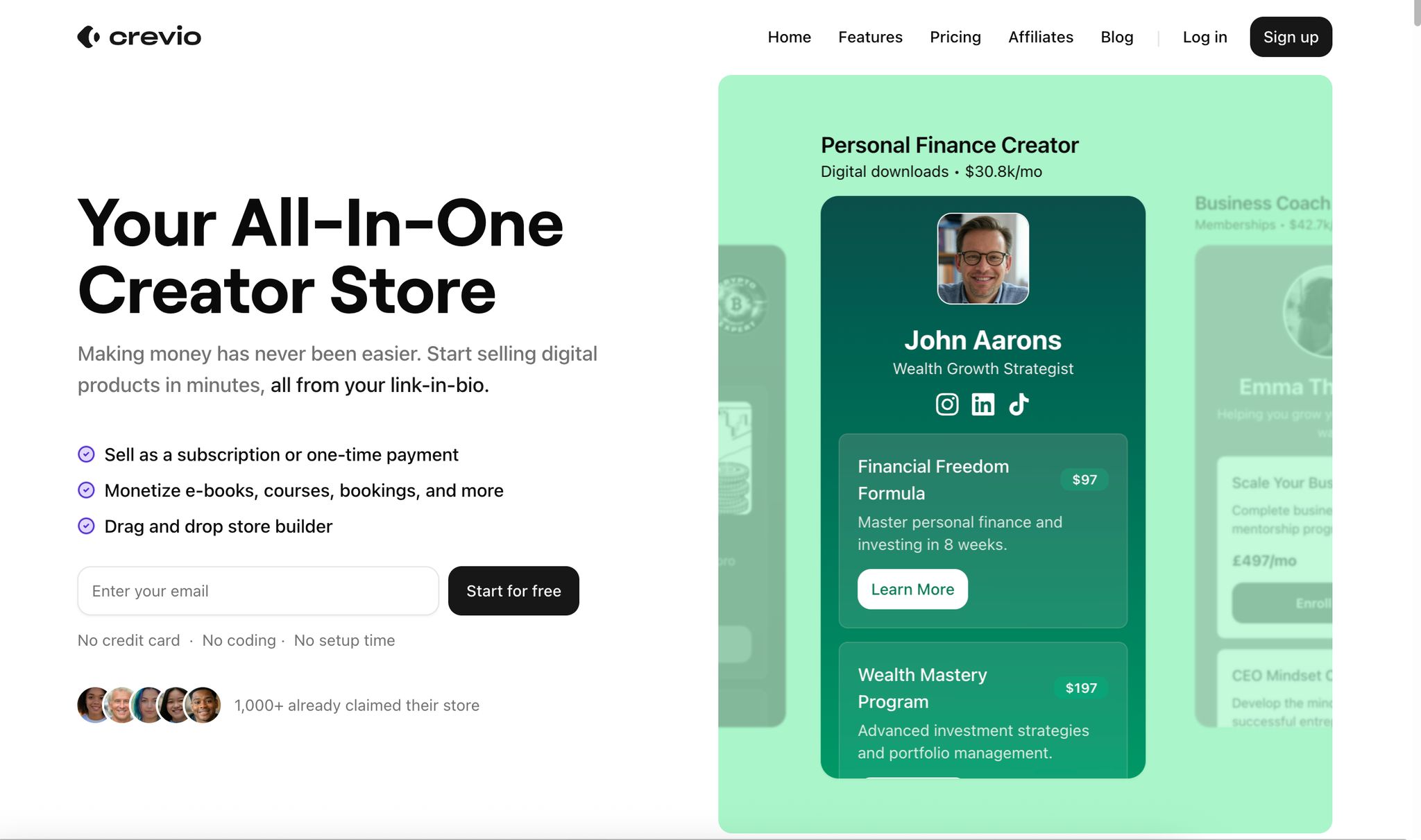How To Promote Digital Products

Want to sell digital products but don’t know where to start? Here’s a quick guide to help you promote your ebooks, online courses, software, or other digital products effectively:
- Research Your Audience: Understand who your customers are, their needs, and how your product solves their problems. Create detailed buyer personas.
- Pre-Launch Buzz: Build excitement before your launch using blog posts, teaser videos, webinars, and email campaigns. Offer lead magnets (like free templates or reports) to grow your email list.
- Optimize Your Product Page: Write clear, benefit-focused descriptions, use high-quality images/videos, and create a pricing strategy (e.g., tiered pricing or bundles).
- Leverage Social Media: Share behind-the-scenes updates, run contests, and partner with influencers to reach a wider audience.
- Use Email Marketing: Create structured email sequences that welcome, onboard, and engage customers. For example, send tutorials, success stories, and exclusive offers.
- Measure Results: Track metrics like conversion rates, email open rates, and revenue. Use A/B testing to refine your strategy.
Quick Tip: Start small – focus on one or two channels, then expand as you learn what works.
| Strategy | Key Action | Example Outcome |
|---|---|---|
| Email Marketing | Offer free resources to grow your list | 53% open rates during campaigns |
| Social Media | Use hashtags and teaser videos | Boosts visibility and engagement |
| Product Page | Highlight benefits with visuals and pricing | Converts visitors into buyers |
This simple framework will help you stand out in the crowded digital market. Let’s dive into the details!
Pre-Launch Marketing
Generating excitement before launching your digital product not only validates your idea but also helps create interest and awareness.
Content Marketing Basics
Slack‘s Canvas campaign is a great example of using content effectively. They combined blog posts, webinars, and social media content with the hashtag #SlackCanvas to spark engagement.
Here’s how you can organize your content strategy:
| Content Type | Purpose | Best Practice |
|---|---|---|
| Blog Posts | Educate & improve SEO | Focus on solving specific pain points |
| Video Tutorials | Showcase the product | Demonstrate solutions in action |
| Case Studies | Build credibility | Highlight real-world problem-solving |
| Webinars | Encourage interaction | Include Q&A sessions for engagement |
Once your content strategy is in place, use email to strengthen your connection with potential users.
Email List Growth
Building an email list is one of the most direct ways to connect with your audience. Storylane’s DemoHub launch is proof of this, as they gained over 700 company sign-ups and half a million impressions before their product even launched.
To grow your email list:
- Create a landing page that clearly communicates your value and offers exclusive pre-launch discounts.
- Offer lead magnets like industry reports or templates to attract sign-ups.
- Use interactive product demos to showcase key features and benefits.
Social Media Presence
Social media is a powerful tool for building a community and driving momentum before your launch. Loops showed how effective this can be by offering startups a chance to appear on a Times Square billboard, which helped them become the #1 Product of the Day and Week on Product Hunt.
Maximize your social media efforts by:
- Sharing behind-the-scenes looks at your product development process.
- Posting teaser videos and sneak peeks to generate curiosity.
- Running contests that encourage email sign-ups.
- Hosting live Q&A sessions to engage directly with your audience.
Partnering with industry influencers can also help you reach a larger audience.
Product Page Setup
Your product page is like your online storefront. It’s where you turn pre-launch buzz into actual sales. Here’s how to make it work.
Writing Product Descriptions
Product descriptions should highlight what your product does, why it’s worth buying, and address customer concerns. Research shows they’re the second most viewed part of a product page.
Here’s how to nail them:
- Start with the biggest benefit
- Mention compatibility and key features
- Use short, scannable sections
- Highlight practical use cases
- End with a clear call-to-action
"Even if your product solves a problem and looks great, 99% of your potential customers have questions. And if you don’t have answers–they’re not buying." – RetroSupply
For more complex products, break your description into sections like this:
| Section | Purpose | Example Content |
|---|---|---|
| Overview | Quick value statement | Solve X problem in Y minutes |
| Features | Key product capabilities | Compatible with Adobe CC 2023 |
| Benefits | Customer-focused outcomes | Save 4+ hours per project |
| Technical | Specific details | File formats, system requirements |
Product Images and Videos
Visuals are powerful. People remember 65% of information when paired with images, compared to just 10% with text alone.
Use high-quality images and videos to:
- Highlight product features
- Show before-and-after comparisons
- Present the product in real-life scenarios
- Maintain consistent branding
Make sure to optimize visuals by compressing file sizes, adding alt text for accessibility, and formatting them for different platforms.
Price Structure
Smart pricing can make a huge difference. Here are three strategies to consider:
- Value-Based Pricing
Focus on the benefits your product delivers to justify its price. - Tiered Pricing
Offer different packages to cater to various customer needs (e.g., basic free access with a $20/month premium option). - Strategic Bundling
Combine complementary products or services. For instance, Peak Freelance offers a $49/month subscription that includes courses, networking, and co-working sessions.
When displaying pricing, include:
- A clear breakdown of features
- Terms for any money-back guarantees
- Multiple payment options
- Details on time-sensitive promotions
Marketing Channels Guide
Each channel plays a role in creating a cohesive digital promotion strategy that boosts visibility and increases sales. Let’s break down some effective approaches.
Email Marketing Steps
Email marketing delivers an impressive return – about $42 for every $1 spent. Here’s how to make the most of it:
- Build Your List
Offer lead magnets that solve specific problems. For example, during a Black Friday campaign, MeetEdgar achieved a 53% open rate by targeting churned customers with a 40% discount. This boosted reactivations from 5–7 to 14–24 subscribers per week. - Structure Your Email Sequences
Timing is key. LeadDyno’s method shows how a well-planned sequence can drive results:
Timeline Type Purpose Day 1 Welcome Introduce the product and offer a quick win Days 2–7 Onboarding Highlight features and provide tutorials Days 8–14 Success Stories Share customer experiences and social proof Days 15–30 Engagement Offer tips and showcase advanced features This strategy has delivered a 40.65% open rate and an 11.77% click rate.
Next, let’s dive into social media tactics to amplify your product’s visibility.
Social Media Tactics
Once your email list is set, use social media to complement your efforts. Research shows that 54% of users rely on social platforms to research products before purchasing.
For your social media strategy, try:
- Sharing behind-the-scenes insights from product development
- Posting customer success stories and testimonials
- Creating educational posts that showcase your product’s benefits
- Using platform-specific tools like Stories, Reels, or Live sessions
Social proof often plays a big role in driving sales.
Now, let’s look at how partner programs can further expand your reach.
Partner Programs
Partner programs are a great way to enhance your email and social strategies. Offer commissions ranging from 25–50% per sale, and focus on building relationships with partners whose values align with your product.
Track essential metrics to measure success:
- Email: Open and click rates
- Social Media: Engagement and sales
- Partners: Referral traffic and revenue per partner
Results Measurement
Keeping tabs on your promotional performance is crucial for refining your digital product marketing efforts. Below, we’ll dive into the key metrics, testing methods, and feedback strategies that can help you improve results.
Key Performance Metrics
Focus on these core metrics to gauge how well your promotions are working:
| Metric Type | What to Track | Target Range |
|---|---|---|
| Conversion | Email sign-ups, purchases | 2–4.29% |
| Financial | ROAS, revenue per visitor | $2.33+ per $1 spent |
| Engagement | Session time, social shares | – |
| Open rate, click-through | – |
For example, if 200 out of 10,000 monthly visitors sign up, your conversion rate is 2%.
"Data is becoming the new raw material of business." – Craig Mundie
In addition to these, consider tracking:
- Cost Per Acquisition (CPA): How much you’re spending to gain each new customer.
- Return Visitor Rate (RVR): A measure of how well you’re retaining your audience.
- Revenue Attribution: Tying sales directly to specific campaigns.
- Social Engagement: Monitoring shares, comments, and click-throughs on social platforms.
Once you have this data, use A/B testing to refine your approach.
Split Testing Methods
A/B testing (also called split testing) involves changing just one element at a time to see what works best. Distribute traffic evenly and define clear success criteria. Test areas such as:
- Product page layouts
- Email subject lines
- Call-to-action buttons
- Pricing displays
- Product descriptions
To get reliable results:
- Ensure traffic is evenly split between test versions.
- Wait until you’ve gathered enough data before making decisions.
- Set clear goals for what success looks like.
- Apply geographic targeting if relevant.
Incorporating customer feedback can further sharpen your strategy.
Customer Feedback Loop
Feedback from customers is a goldmine for improving your marketing. Here’s how to make the most of it:
- Collect Feedback Use multiple channels to gather input, such as:
- Support tickets
- Product reviews
- Feature requests
- Social media mentions
- Analyze Feedback Look for patterns in areas like:
- Communication preferences
- Product improvement suggestions
- Marketing effectiveness
- Competitive positioning
- Implement Changes Apply insights to improve:
- The clarity of your marketing messages
- How you position your product
- Your choice of marketing channels
- Customer support offerings
"Using customer feedback in marketing can give you a huge edge over competitors." – Lumoa
Personalization plays a big role here. In fact, 93% of B2B marketers credit personalization with driving their revenue growth. Regularly updating your strategy based on these insights will help you stay ahead.
Next Steps
Main Points Review
Promoting digital products effectively requires a clear focus on the right channels and consistent efforts. Here are the core strategies to keep in mind:
Content Creation & Distribution
- Focus on platforms where your audience spends their time.
- Post visually appealing content that grabs attention.
- Share behind-the-scenes updates to build trust and connection.
Strategic Marketing
- Prioritize one or two key channels to maximize your results.
- Offer seasonal bundles during peak shopping times to attract buyers.
- Use user-generated content (UGC) to build credibility and show social proof.
"Pick one or two strategies to make your first few sales, then add to your marketing strategy later. If you try to do everything at once, you’ll stretch yourself thin." – Luisa Zhou
Quick Start Guide
Here’s a simple timeline to kickstart your efforts:
| Timeline | Action Items | Expected Outcome |
|---|---|---|
| Week 1 | Choose your primary channel | A clear strategy in place |
| Week 2 | Create a content schedule | Consistent posting |
| Week 3 | Launch your first promotion | Initial sales data |
| Week 4 | Review metrics | Improved strategy |
To get started, consider these proven tactics:
- Social Media Engagement: Use relevant hashtags and attention-grabbing hooks to increase visibility.
- Email Marketing: Build your subscriber list with valuable freebies or lead magnets.
- Limited-Time Offers: Encourage quick decisions by setting deadlines for promotions.
- Community Building: Interact directly with your audience to foster loyalty and trust.
Crevio Platform Features
 Crevio is designed to support every step of your promotional journey, from setup to sales.
Crevio is designed to support every step of your promotional journey, from setup to sales.
Store Customization
- Mobile-friendly storefronts that look great on any device.
- Easy-to-use drag-and-drop builder for quick setup.
- Custom domain options to match your branding.
- A branded checkout experience that feels professional.
Marketing Tools
- Flexible content delivery options to suit your strategy.
- Support for various payment models, including one-time and subscriptions.
- Complete ownership of customer data for better insights.
- Seamless integration with your existing marketing tools.
Crevio offers two pricing plans tailored to different needs:
- Basic Plan ($29/month): A great starting point for beginners with up to 5 products.
- Growth Plan ($89/month): Perfect for scaling, with unlimited products and advanced features.
"Crevio helps creators monetize expertise with a balance of simplicity and advanced features for both beginners and experienced users." – John Sandy, Content Creator






